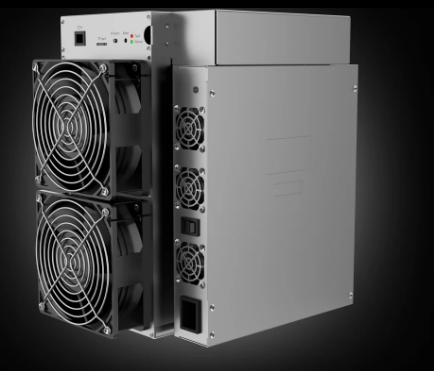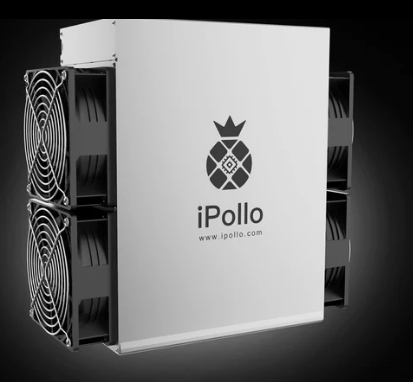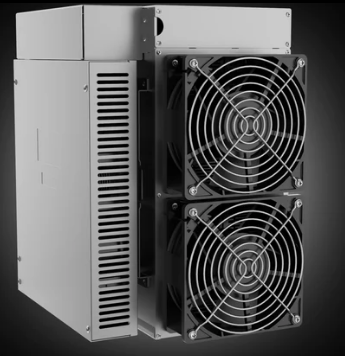iPollo B1L repair guide: How to fix common issues
iPollo B1L Repair Guide: How to Fix Common Issues
The iPollo B1L has emerged as a standout in the Bitcoin mining hardware market, offering a compelling blend of performance, efficiency, and reliability. Designed for professional mining operations, this SHA256 algorithm ASIC miner delivers a hashrate of 58 TH/s with a power consumption of 3000W (±10%), making it a competitive choice for both small-scale miners and large-scale mining farms. However, like any sophisticated piece of equipment, the iPollo B1L can encounter operational issues over time. This guide will walk you through common problems, their causes, and practical solutions to keep your miner running at peak efficiency.
Understanding the iPollo B1L: A Brief Overview
Before diving into troubleshooting, it’s essential to understand the key features and design of the iPollo B1L. This miner is built for durability and efficiency, with a compact form factor (365×195×290mm) that optimizes space utilization in mining facilities. Its robust construction, weighing 12.70kg, ensures it can withstand the rigors of continuous operation. The B1L operates on a 200-240V input voltage, making it compatible with standard industrial power infrastructure.

One of the standout features of the iPollo B1L is its comprehensive warranty protection, offering 180 days of coverage backed by official manufacturer support. This, combined with iPollo’s reputation as a reliable ASIC manufacturer, provides miners with peace of mind and reduced investment risk. Additionally, the miner’s superior maintenance economics—thanks to readily available replacement parts and a global logistics network—ensures minimal downtime in case of repairs.
Common Issues and Practical Solutions
1. Overheating and Thermal Management Problems
Symptoms:

- Frequent shutdowns or reduced performance.
- High fan speeds or unusual noise from cooling systems.
- Error messages related to temperature thresholds.
Causes: Overheating is one of the most common issues in ASIC miners, often caused by inadequate ventilation, dust buildup, or malfunctioning cooling components.
Solutions:
- Improve Ventilation: Ensure the miner is placed in a well-ventilated area with sufficient airflow. Avoid stacking miners too closely together.
- Clean Regularly: Dust and debris can clog fans and heat sinks, reducing cooling efficiency. Use compressed air to clean the miner’s interior every few weeks.
- Check Fans: If the fans are noisy or not spinning properly, they may need to be replaced. iPollo’s global spare parts network makes it easy to source replacements.
- Monitor Temperatures: Use the miner’s built-in monitoring tools to track temperature levels and adjust settings if necessary.
2. Power Supply Issues
Symptoms:
- Miner fails to power on or shuts down unexpectedly.
- Fluctuating hashrate or inconsistent performance.
- Burning smell or visible damage to power cables.
Causes: Power supply problems can stem from faulty cables, unstable voltage, or issues with the power supply unit (PSU).
Solutions:
- Inspect Cables: Check all power cables for signs of wear or damage. Replace any frayed or burnt cables immediately.
- Stabilize Voltage: Ensure the miner is connected to a stable power source within the specified 200-240V range. Consider using a voltage stabilizer if fluctuations are common in your area.
- Test the PSU: If the miner still fails to power on, the PSU may be faulty. iPollo’s warranty coverage includes PSU replacements, so contact their support team for assistance.
3. Hashrate Drops or Inconsistent Performance
Symptoms:

- Lower-than-expected hashrate.
- Frequent fluctuations in mining performance.
- Error messages related to hardware or software issues.
Causes: Hashrate drops can result from overheating, outdated firmware, or hardware malfunctions.
Solutions:
- Update Firmware: Ensure the miner is running the latest firmware version. iPollo regularly releases updates to optimize performance and fix bugs.
- Check Hardware Connections: Loose or damaged connections between components can impact performance. Inspect and reseat all internal connections.
- Monitor System Logs: Use the miner’s diagnostic tools to identify specific hardware or software issues. Address any errors or warnings promptly.
4. Network Connectivity Problems
Symptoms:
- Miner fails to connect to the mining pool.
- Frequent disconnections or high latency.
- Error messages related to network settings.
Causes: Network issues can arise from incorrect settings, faulty Ethernet cables, or problems with the router or modem.

Solutions:
- Verify Network Settings: Ensure the miner’s IP address, gateway, and DNS settings are correctly configured.
- Test Ethernet Cable: Replace the Ethernet cable if it’s damaged or not functioning properly.
- Restart Network Equipment: Power cycle your router or modem to resolve connectivity issues.
- Check Pool Configuration: Verify that the mining pool’s address and port are correctly entered in the miner’s settings.
5. Noise or Vibration Issues
Symptoms:
- Unusual noises during operation.
- Excessive vibration that affects stability.
- Rattling sounds from internal components.
Causes: Noise and vibration problems are often caused by loose screws, worn-out fans, or misaligned components.
Solutions:
- Tighten Screws: Open the miner’s casing and check for loose screws. Tighten them to reduce vibration.
- Replace Fans: If the noise is coming from the fans, they may need to be replaced. iPollo’s spare parts network ensures quick access to replacements.
- Inspect Internal Components: Ensure all internal components are securely mounted and properly aligned.
Preventive Maintenance Tips
To minimize the likelihood of issues and extend the lifespan of your iPollo B1L, follow these preventive maintenance practices:
- Regular Cleaning: Dust and debris can accumulate quickly in mining environments. Clean the miner’s exterior and interior every few weeks.
- Monitor Performance: Use the miner’s diagnostic tools to track performance metrics and identify potential issues early.
- Update Firmware: Stay up-to-date with the latest firmware releases to benefit from performance improvements and bug fixes.
- Inspect Components: Periodically check fans, cables, and connections for signs of wear or damage.
- Optimize Environment: Ensure the mining facility has adequate ventilation, stable power, and proper temperature control.
Leveraging iPollo’s Support and Warranty
One of the key advantages of the iPollo B1L is its comprehensive warranty protection and robust support network. If you encounter issues that cannot be resolved through basic troubleshooting, don’t hesitate to reach out to iPollo’s customer support team. Their global logistics excellence ensures that replacement parts and repair services are readily available, minimizing downtime and maximizing profitability.
Conclusion
The iPollo B1L is a powerful and efficient Bitcoin mining solution designed for professional operations. While it’s built to withstand the demands of continuous mining, occasional issues can arise. By understanding common problems and their solutions, you can ensure your miner remains operational and profitable. Regular maintenance, timely updates, and leveraging iPollo’s support network are key to maximizing the longevity and performance of your iPollo B1L. With the right care and attention, this miner can be a valuable asset in your cryptocurrency mining arsenal.